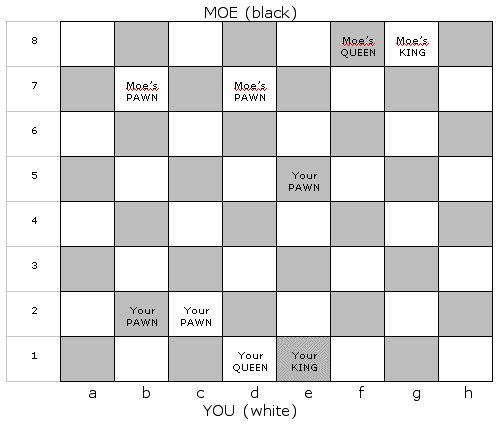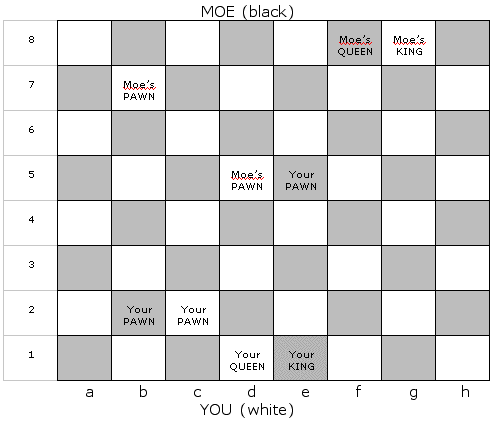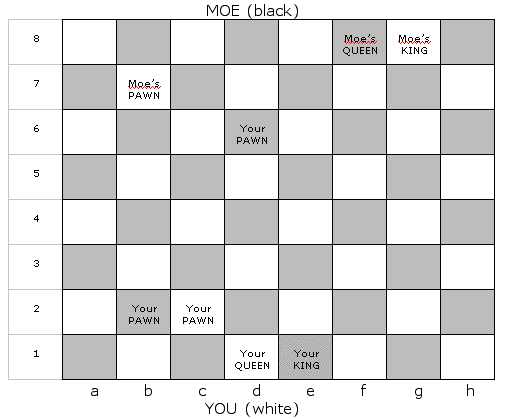En passant is a special way for you to capture your opponent's (Moe's) pawn. This is exactly how it always works:
1. You have a pawn in the two spaces away from Moe's original pawn line-up (in other words, your pawn is in row 5).
2. Moe moves a pawn TWO spaces so that it is in the square right next to your pawn.
3. When Moe moved his pawn, it passed through a square in which if it had only moved one space, you could've captured it. So we pretend that he did only move that pawn one space, and you take his pawn, moving one square diagonally forward, just as if it had been a normal capture. See below for an example:

Take note of how your pawn is in the 5th row. Now if Moe moves his pawn from d7 to d5, it has to pass through d6, where you might have had the opportunity to capture it. So if you want, you can capture that pawn, even if he moves it to d5. Look below:

Moe moved to d5

And thanks to en passant, you captured his pawn, and you moved your piece as if Moe had only moved his pawn one space. Cool, huh?
But there is a limit to this rule: if you're going to take Moe's pawn after he moved it out two spaces using en passant, you have to take it on your next immediate turn. You can't move other pieces, and then later just take his pawn away when it's directly next to yours. Of course, if Moe only moved his pawn out one space, you can attack diagonally and capture it whenever you like (unless he captures yours first).
SoYouWanna know more? Check out our full-length article SYW learn how to play chess?

